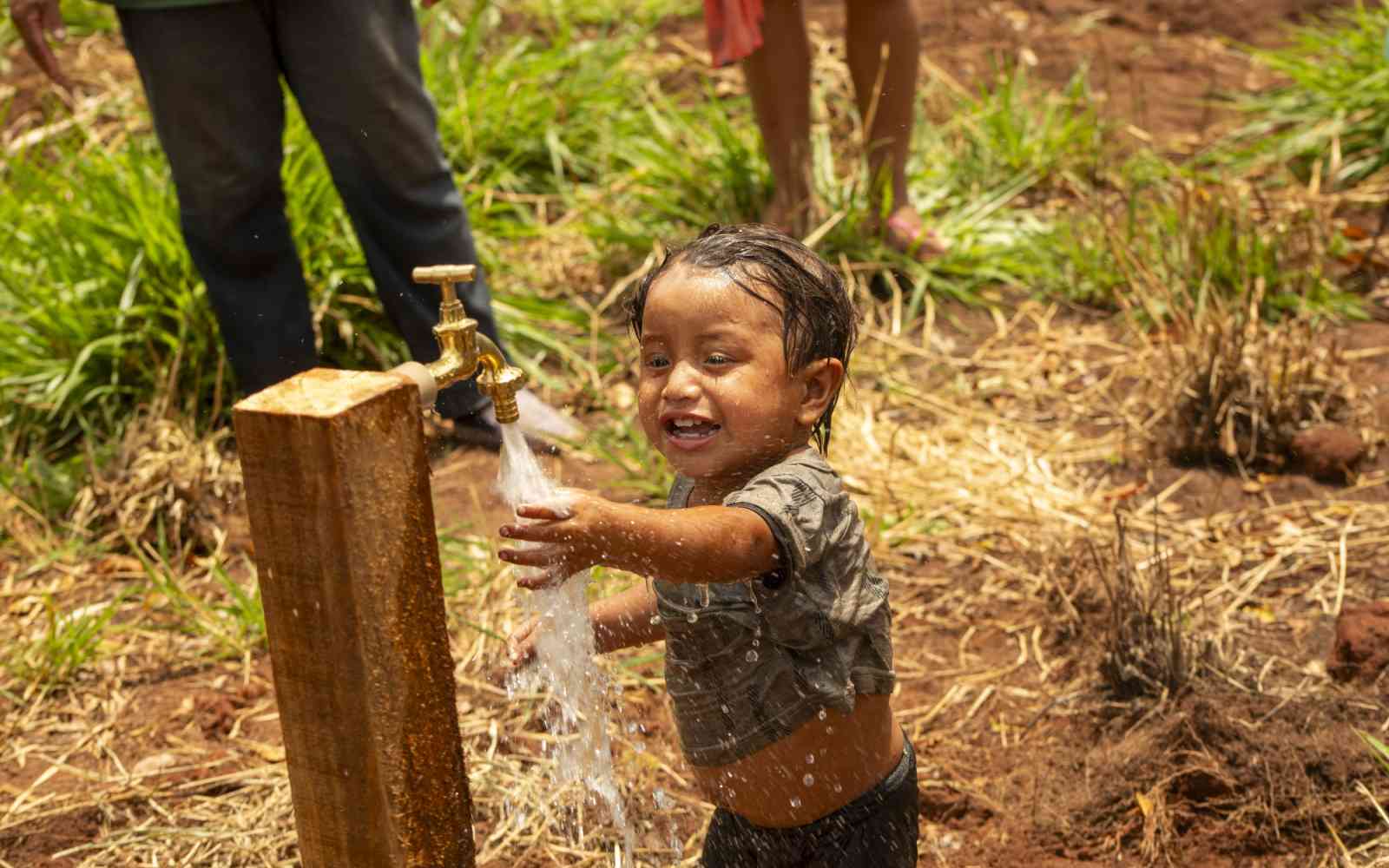The United Nations Office for Project Services (UNOPS)

Towards climate resilience in Argentina
Rainwater harvesting systems are helping secure access to safe drinking water in north Argentina and building indigenous communities’ resilience to droughts and heatwaves.
In an arid and remote area of Santa Victoria Este, in the province of Salta, Argentina, indigenous communities face a critical water crisis.
Scattered across a vast region of 400,000 hectares, some inhabitants can’t access water in sufficient quantity and quality.
In some areas, the underground water contains high levels of salt, which makes water fetched from traditional wells unsafe for drinking and caring for livestock. The dispersed settlements and nomadic traditions have also prevented building other kinds of conventional water infrastructure.
In times of drought, water becomes very scarce, the soil does not produce vegetation and access to water for human consumption becomes very difficult.
To access water, the community members are left with two main options: To fetch water from several natural sources such as lagoons or rely on municipal tanker trucks to deliver water. Both come with challenges.
The water from the lagoons and other natural sources isn’t fit for human consumption. Uneven land and water accessibility coupled with increasingly frequent and intense weather events such as heavy rainfall, heat waves and droughts can make travel by foot to fetch water a challenging and dangerous journey.
In the dry season, temperatures often exceed 50 degrees Celsius and at the end of August, some of the lagoons dry up.
Harsh weather conditions, logistics and long distances can also prevent the water delivery trucks from reaching those living in the most remote locations.



A turning point
Following a ruling from the Inter-American Court of Human Rights in 2020, a consultation process was established between the national and local authorities and the indigenous communities to make access to drinking water a reality for these remote communities.
“For about 40 years we have been demanding that the national state recognize our rights and our territory … [access to water] has been a very worrying issue for many years,” says Ramón Pérez, Representative of Lhaka Honhat Association.
Working with the Ministry of Public Works in Argentina and local organizations, UNOPS is supporting these efforts by providing clean water to more than 350 people in 12 indigenous communities of Santa Victoria Este – through the construction of 75 rainwater harvesting and storage systems.
The 75 cisterns are equipped with water separation systems to isolate the particles and sediments from the harvested water to make it safe.
Each cistern can store up to 16,000 litres of clean water – enough for a family to respond to their basic needs for 6 months – building resilience to the long period of droughts in the region.
We would look for water at the dam, use all the water and return to the dam. It was a lot of work, almost 1 kilometre. But today it has changed.



Not just water
Active participation from the communities and close collaboration with social organizations – Chowhay Indigenous Cooperative, Fundapaz and Asociana – was key to the project’s success.
“With this project we get each community to decide where to install each work so that they feel empowered,” says Cristina Pérez, President of the Lhaka Honhat indigenous association.
Residents received training that was adapted to local traditions and practices. The use of Wichí and Toba language interpreters also enabled broad participation from the communities – ensuring the proper use of the cisterns and promoting good water usage practices.
We incorporated gender, diversity and inclusion principles throughout the project. Translators and interpreters were a way to ensure that everyone had the opportunity to participate – especially women and children who often wouldn’t speak or understand Spanish.
UNOPS also provided support and training to strengthen the local workforce and ensure the quality of the construction of the cisterns – fostering long-term sustainable development in the communities.
"I have learned a lot about cisterns and being a bricklayer. I am using the leftover clay to build my house. I’m making my little ranch,” says Alfonso Pérez, a worker at the Chowhay Indigenous Cooperative
It was a real team effort. The truth is that we are going to leave an optimal local workforce after the project ends.


I am the first woman to be part of the construction team. In our area it is very difficult to find formal work and often young people have to leave to look for work elsewhere. I am very happy that UNOPS has given work to our youth.
Beyond ensuring access and storage of clean drinking water for 75 families and improving overall livelihoods and prospects, the project is fuelling ambitions. Some families are cultivating small gardens while others are using their newly acquired knowledge to find new job opportunities. The cisterns roofs also provide the communities with a welcome protection from the sun.
We are thinking about making the garden with this water [from the cisterns] that we will have for irrigation. What we plant the most here is tomatoes and bell peppers.
The rainwater harvesting and storage systems are improving the health, wellbeing and livelihoods of many families – helping them build resilience to more frequent extreme droughts and heatwaves.
The construction of 75 rainwater harvesting and storage systems in north Argentina is one component under a 7-year $356 million project implemented by UNOPS with the government of Argentina. The project, ‘Improving Federal Infrastructure for Sustainable Development’, includes the improvement, renovation, reconstruction and enhancement of public spaces and urban infrastructure and supporting the response to the national health emergency among others.





















